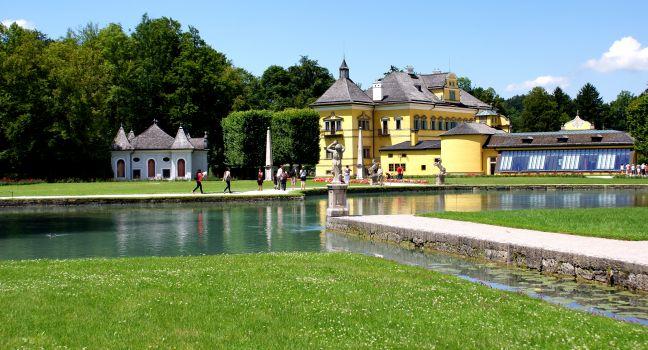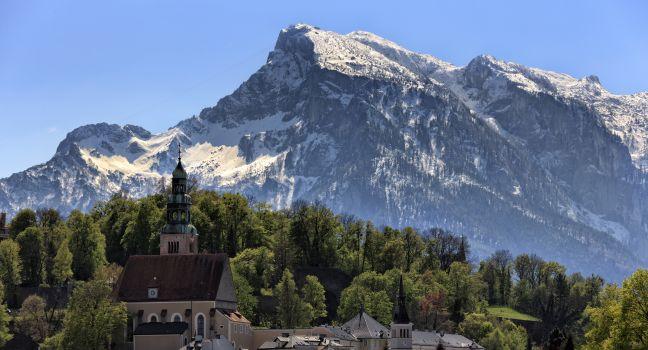With the world-famous Salzburg Festival as their objective, music lovers head for the Hofstallgasse, the street where the three festival theaters are located. Arrow-straight and framing a grand view of the Fortress Hohensalzburg, the street takes its name from the court stables once located here. Now, in place of the prancing horses, festival goers promenade along Hofstallgasse during the intervals of summer performances, showing off their suntans and elegant attire. If you want to see the inside of the halls, it's best to go to a performance, but guided tours are given and group tours can be booked on request. The first theater is the Haus für Mozart (House for Mozart), formerly the Kleines Festspielhaus, or Small Festival Hall. The massive lobby frescoes by Salzburg painter Anton Faistauer welcome 1,600 patrons to world class Lied (song) recitals and smaller scale operas. The center ring is occupied by the famous Grosses Festspielhaus (Great Festival Hall), leaning against the solid rock of the Mönchsberg. Opened in 1960, it seats more than 2,150. In recent times the Grosses Festspielhaus, nicknamed the Wagner Stage because of headline-making productions of the Ring of the Nibelungs, has been the venue for spectacular operas and concerts by the world's top symphony orchestras and soloists. Stage directors are faced with the greatest challenge in the third theater, the Felsenreitschule (the Rocky Riding School), the former Summer Riding School, which—hewn out of the rock of the Mönchsberg during the 17th century by architect Fischer von Erlach—offers a setting that is itself more dramatic than anything presented on stage. Max Reinhardt made the first attempt at using the Summer Riding School as a stage in 1926. With its retractable roof it gives the impression of an open-air theater; the three tiers of arcades cut into the rock of the Mönchsberg linger in the mind of fans of The Sound of Music film, for the von Trapps were portrayed singing "Edelweiss" here in their last Austrian concert. (In fact, the 1950 Festival farewell by the Trapp Family Singers, conducted by Franz Wasner, was given in the Mozarteum and at the cathedral square.) The theaters are linked by tunnels (partially in marble and with carpeted floors) to a spacious underground garage in the Mönchsberg.





